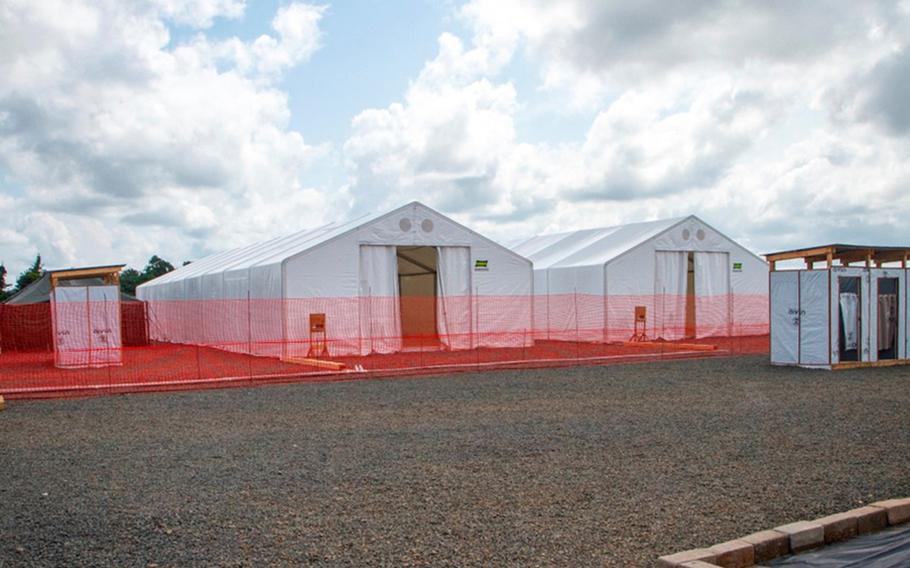
An Ebola treatment unit stands completed after being built by U.S. soldiers in Buchanon, Liberia in November of 2014. The New York Times reported Monday that only 28 patients were treated at the 11 U.S-built treatment units in Liberia. (Courtesy of U.S. Army)
Only 28 Ebola patients have been treated at the 11 treatment units built last year in Liberia by the U.S. military after President Barack Obama ordered American intervention to help end the deadliest Ebola virus epidemic in history, The New York Times reported.
Nine of the centers have never seen a single patient, the newspaper reported.
Despite millions of dollars spent and nearly 3,000 U.S. troops deployed in the effort, it all came too late, the paper reported. “But even before the first treatment center built by the American military opened there, the number of Ebola cases in Liberia had fallen drastically, casting doubt on the American strategy of building facilities that took months to complete,” it said.
U.S. Army Africa commander Maj. Gen. Darryl Williams was dispatched to Liberia in September after Obama announced the plan to aid a U.S. historical ally in stemming the epidemic, then raging in Liberia, Sierra Leone and Guinea.
U.S. Army Africa declined to comment on the report.
Deploying the military cost $360 million, according to the Times’ report, not including the construction, staffing and operating expenses at the treatment centers it built.
Of the 11 centers the U.S. military built, all but one opened after Dec. 22. By then, Ebola cases had already fallen to the point that Liberian and foreign officials were discussing the closing of treatment units built by other organizations that were no longer needed, the paper reported.
“I knew that most of the ETUs that were being built may not receive a single patient,” Dr. Francis Kateh, who helped lead the response of the Liberian government, which decided with the Americans where to build the 11 centers, told the Times.
“But at the same time, you couldn’t put a stop to that process,” he added. “The train was coming full force.”
But Jeremy Konyndyk, who headed the Ebola response for the United States Agency for International Development, which was in charge of the American campaign, told the paper that there had been no “template” for addressing such an epidemic.
“Our initial expectation, based on some of the models and some of the experiences and precedents from past Ebola outbreaks, was that the way you would beat this would be to get enough ETU beds,” told the paper. “On balance, I think we took the right approach. The challenge in this kind of a response is you don’t know where the fire is going to break out, but you’re going to need a fire station there when it does.”
Liberia, now on track to be declared Ebola-free, has had 9,862 total Ebola infections and the most recorded deaths — 4,408. Worldwide, more than 25,500 cases and more than 10,500 deaths have been recorded, with new infections continuing in Guinea and Sierra Leone.